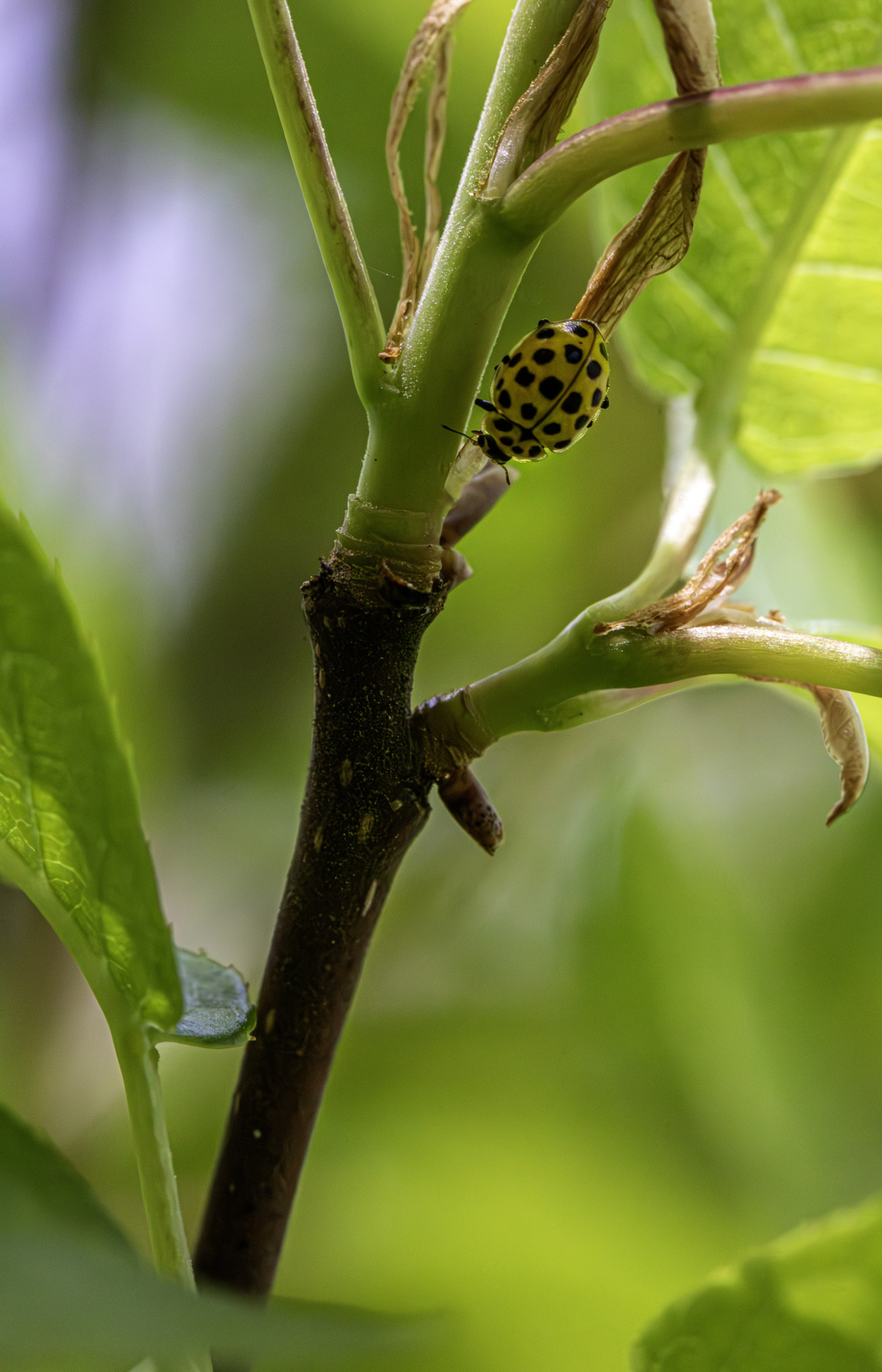The 22-spot Ladybird (Psyllobora vigintiduopunctata) is a charming, brightly colored member of the family Coccinellidae. Unlike most ladybirds that are predators of aphids, this species is unique in feeding on mildew, making it an essential player in controlling fungal growth on plants.
Physical Description
- Size:
- 3–5 mm in length, making it one of the smaller ladybird species.
- Coloration:
- Bright yellow elytra (wing covers) with 22 distinct black spots (11 on each side).
- The head and pronotum (the area behind the head) are yellow with small black markings.
- Shape:
- Dome-shaped body typical of ladybirds.
Behavior
- Feeding:
- Unlike many ladybirds, it feeds exclusively on powdery mildew fungi found on plants such as nettles, umbellifers, and various shrubs.
- Activity Period:
- Active from April to October, with peak activity in warm, humid conditions conducive to mildew growth.
- Flight:
- Capable fliers but typically found crawling on mildew-covered vegetation.
Habitat
- Found in areas rich in vegetation, including:
- Meadows.
- Woodland edges.
- Gardens and parks.
- Hedgerows and damp grasslands.
Life Cycle
- Eggs:
- Small and yellow, laid in clusters on the underside of mildew-infested leaves.
- Larvae:
- Grayish-white with dark markings, feeding exclusively on mildew.
- Undergoes several molts before pupating.
- Pupae:
- Yellowish and immobile, attached to leaves or stems.
- Adults:
- Emerge within 1–2 weeks, ready to feed and reproduce.
Distribution
- Common across Europe and parts of Asia, particularly in temperate regions.
- Often found in moist habitats where mildew thrives.
Conservation Status
- Classified as Least Concern due to its adaptability and wide range.
- Sensitive to the use of fungicides and habitat loss caused by intensive agriculture or urban development.
Ecological Role
- Mildew Control:
- Plays a critical role in regulating mildew populations on plants.
- Food Source:
- Larvae and adults are prey for birds, spiders, and predatory insects.
Interesting Facts
- Non-Predatory: Unlike most ladybirds, this species is a specialist feeder on fungi rather than aphids or other insects.
- Color Warning: Its bright yellow color serves as a warning to predators of its potential unpalatability.
- Mildew Specialist: Its preference for mildew makes it beneficial for plants, as it helps reduce fungal infections.
Summary
The 22-spot Ladybird (Psyllobora vigintiduopunctata) is a unique and beneficial species that thrives on mildew, contributing to plant health and ecosystem balance. Its bright yellow body adorned with black spots makes it a delightful find in gardens and woodlands. Supporting natural habitats and reducing fungicide use can help ensure the survival of this remarkable ladybird.
Visited 288 times, 16 visit(s) today
Views: 484
Subscribe to the newsletter:
